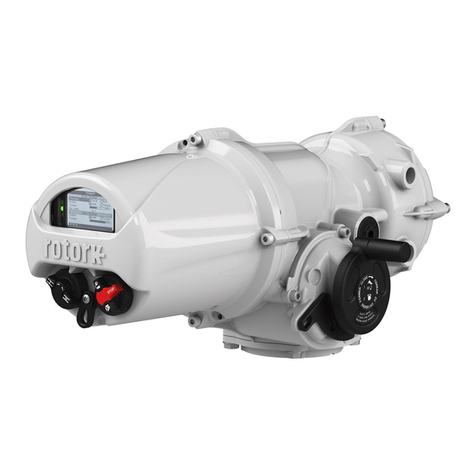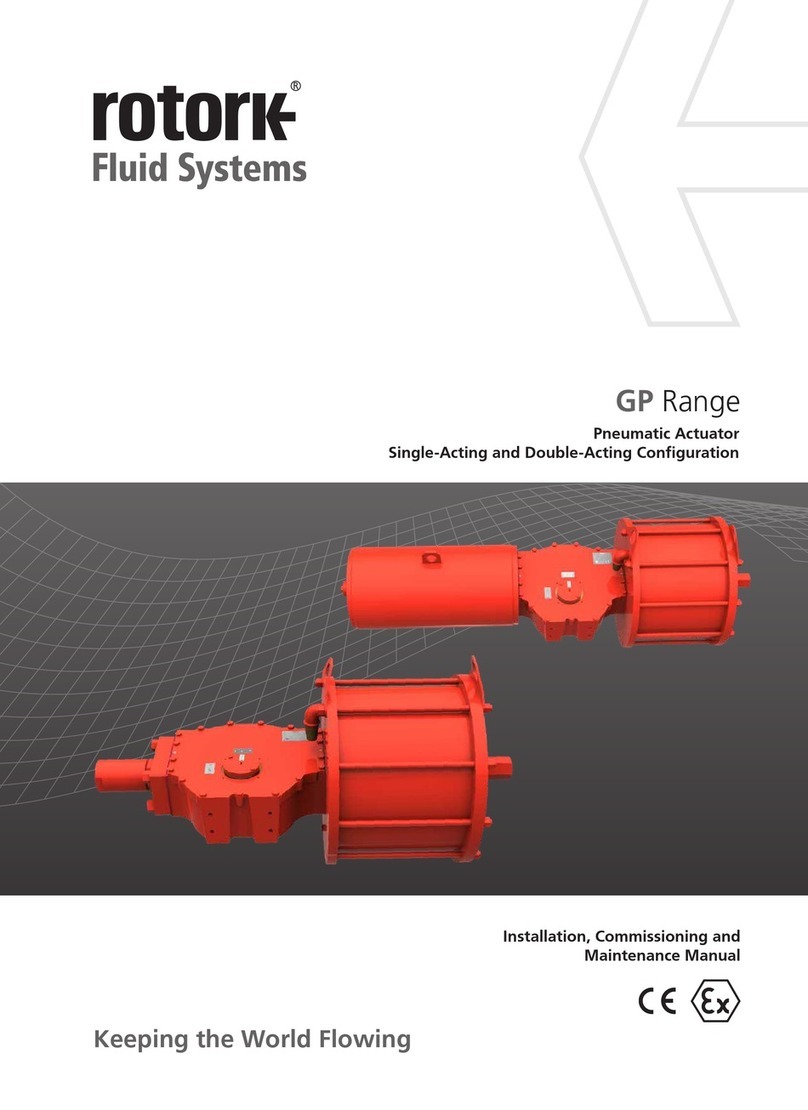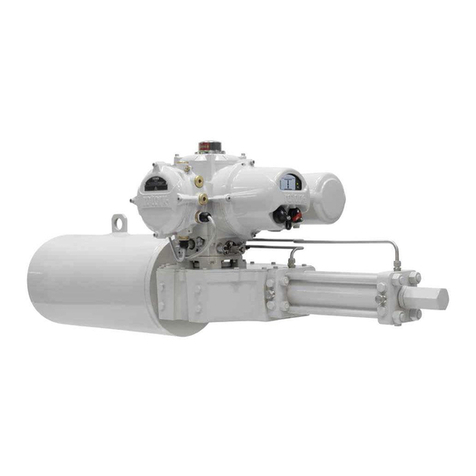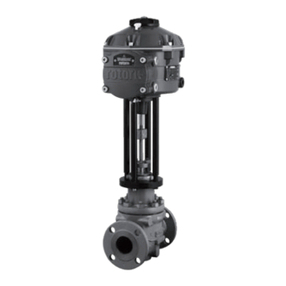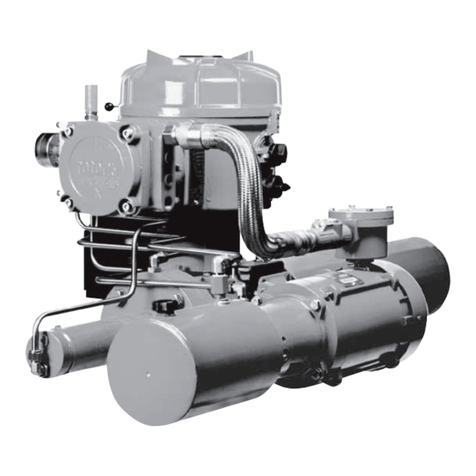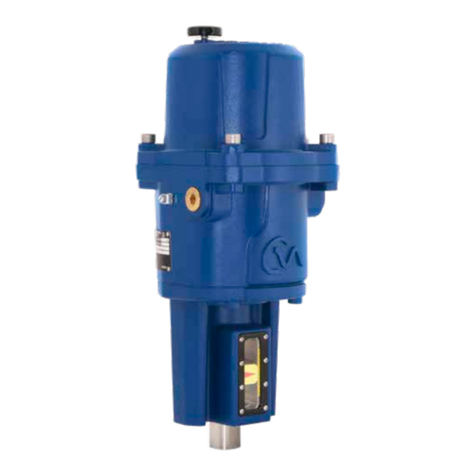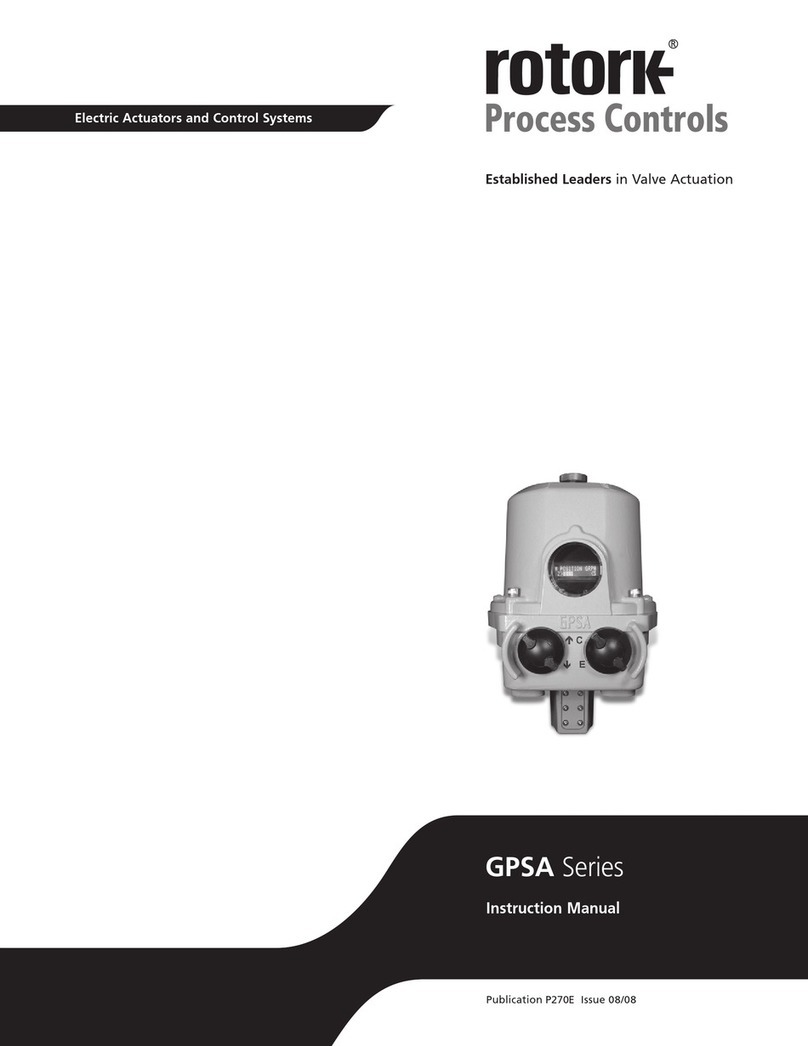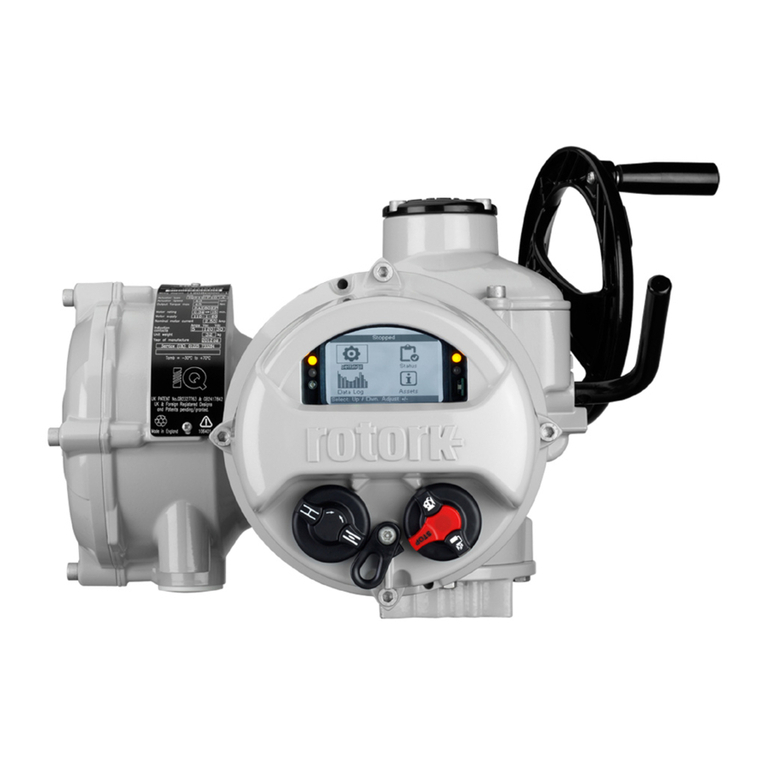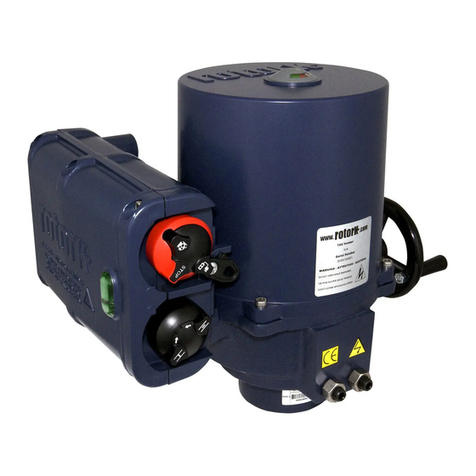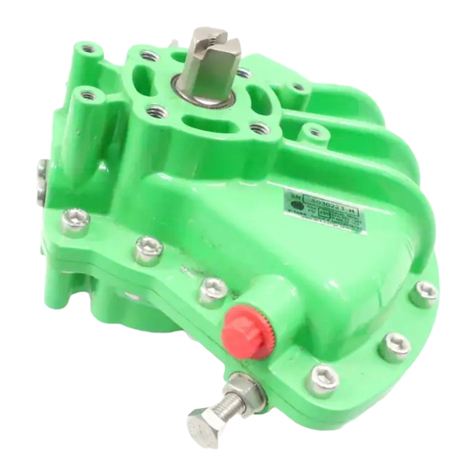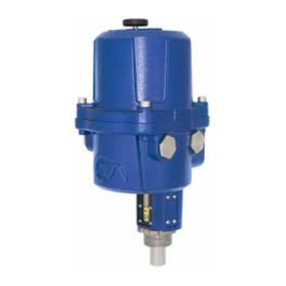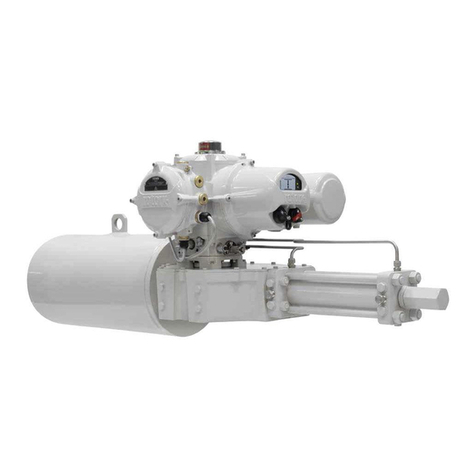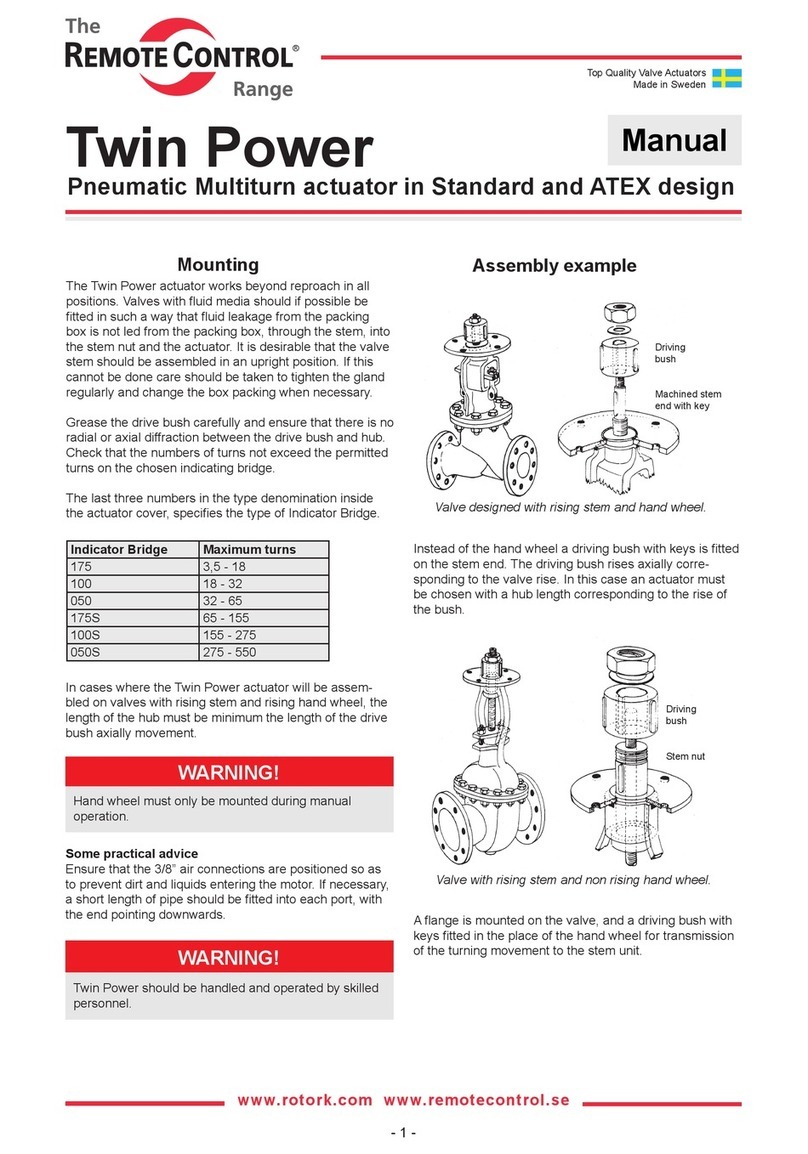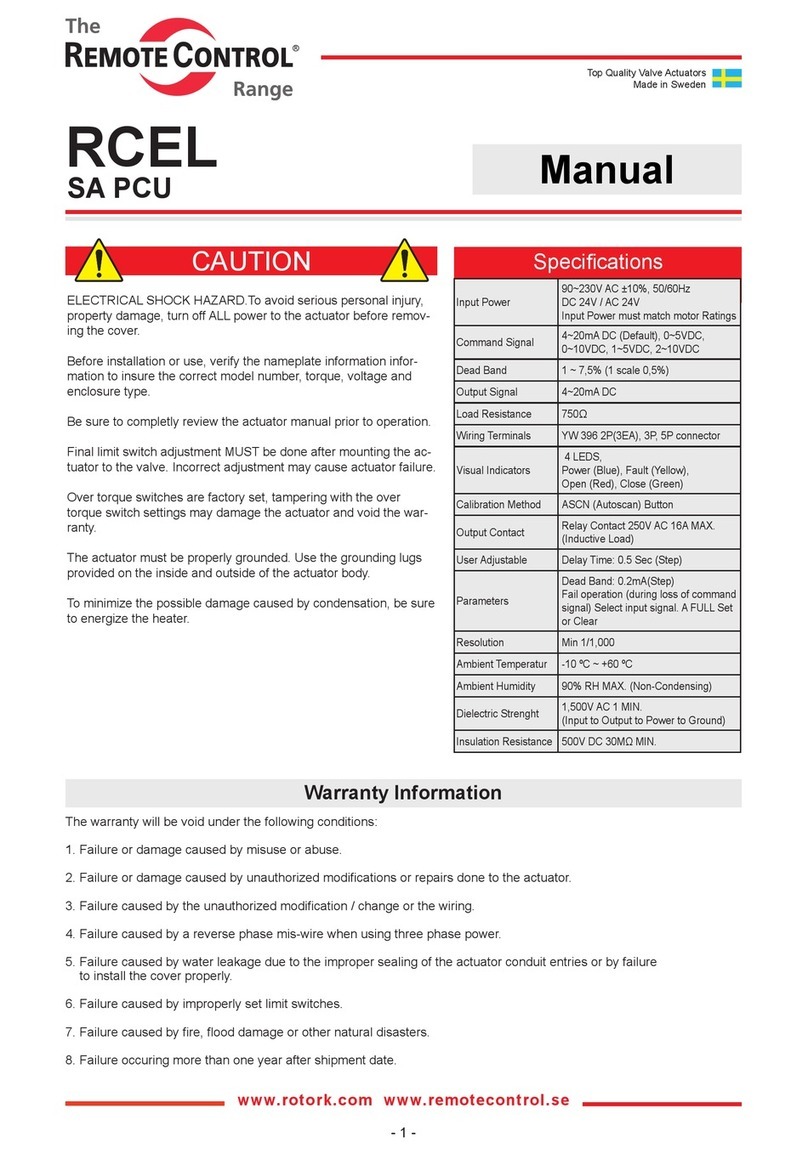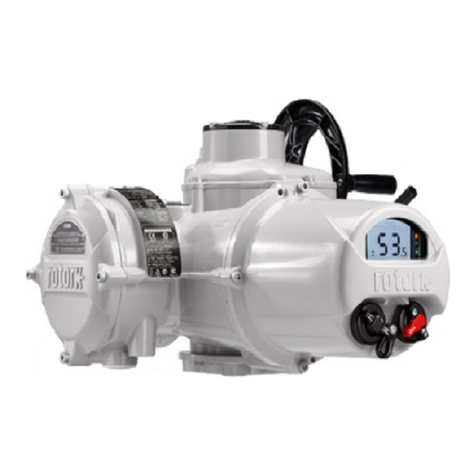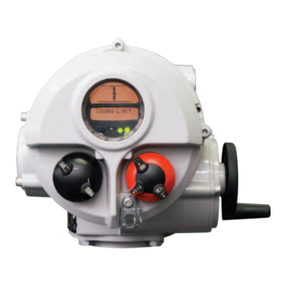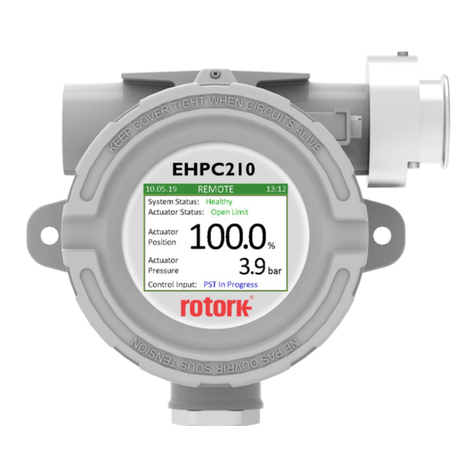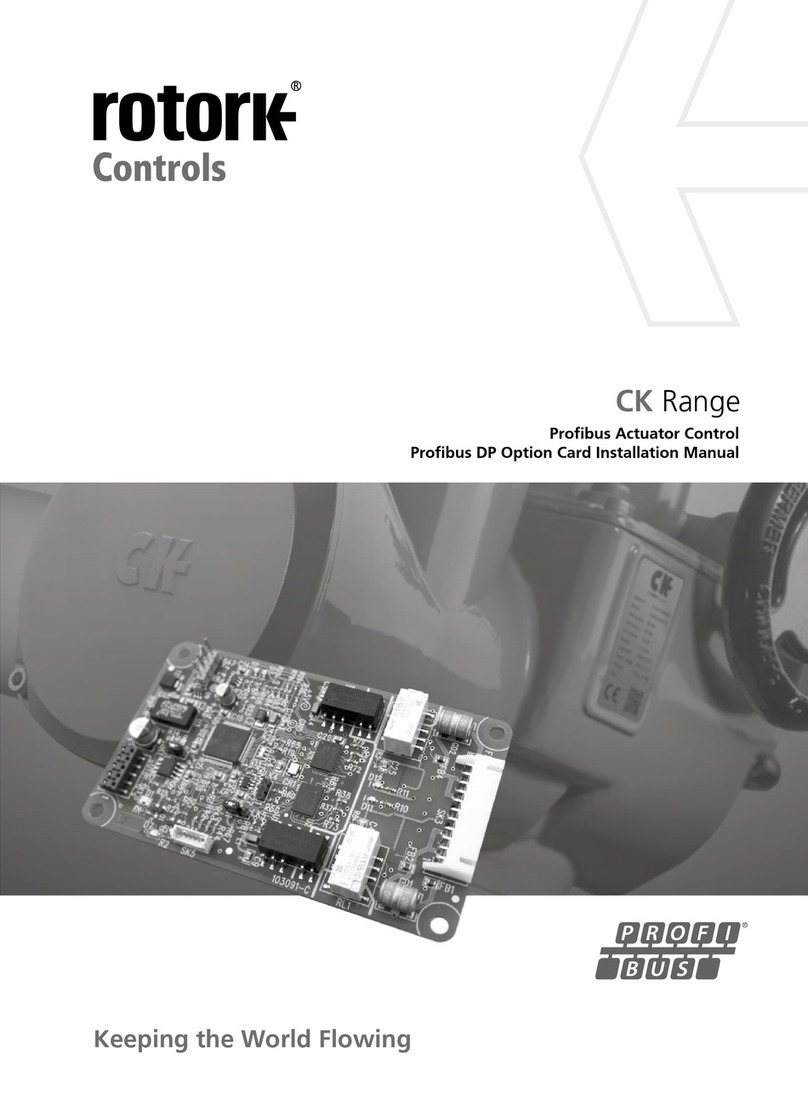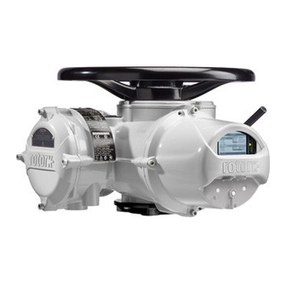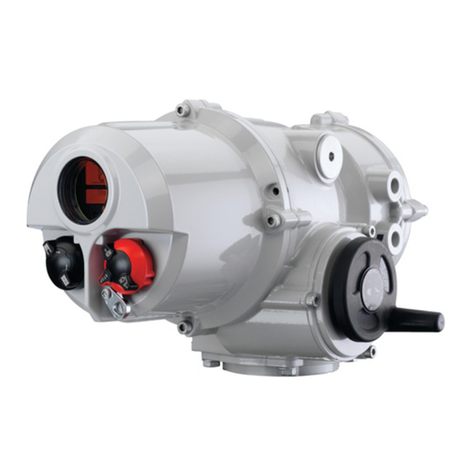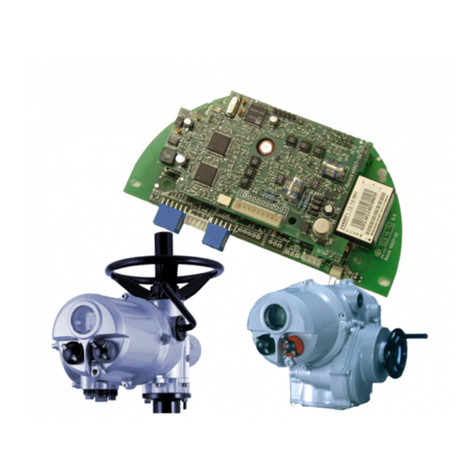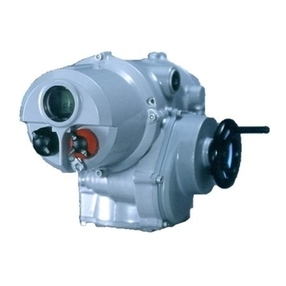
Keeping the World Flowing
9
10.0 Installation on Valve
Before proceeding, read and understand the Health and
Safety information.
Note: The valve should be properly secured prior to
performing the following operations according to
instructions provided by the Valve Manufacturer.
Prior to performing any operations check the
operating drawings and TAG numbers.
Consult Rotork Fluid Systems for any additional information.
10.1 Preliminary Actions
Verify the Hazardous Area classification of the
actuator is compatible with the plant zoning. Refer to
actuator nameplate.
•
The centreline of the cylinder is usually aligned to the
centreline of the associated pipe work
•
Ensure all fasteners are adequately tightened to avoid
loosening during operation, taking into account the
vibrations induced by the dynamics of the pipeline
•
Piping used to provide power to the actuator must be
free from contaminants and debris. Ensure tubing runs
are adequately fastened and supported to minimize
repetitive stress induced by the dynamics of the pipeline.
Ensure there are no leaks from any gas connections.
Tighten as required
10.2 Instructions
Actuator to valve attachment can be performed by:
•
Mounting directly using the actuator housing bottom
flange drilling
•
Using an adapter and a coupling joint between the
actuator and the valve
Actuator bottom flange drilling is in accordance to ISO 5211
(DIN 3337) standard.
Fig 10.1 Actuator bottom connections
Each pinion, as standard, is provided with a female key ISO
5211 double square, allowing direct mating to the valve stem,
or coupling.
Optional valve interfaces are ISO 5211 single square parallel,
ISO 5211 single square diagonal and double D.
The assembly position of the actuator must be in accordance
with the actuator design, plant requirements and the valve
model. In order to assemble the actuator onto the valve,
proceed as follows:
•
Verify the coupling dimensions of the valve flange and
stem; they must meet the actuator coupling dimensions
(refer to PUB110-001 for metric and PUB110-002 for
imperial)
•
Actuator is supplied in the fail position (for single-acting).
Set the valve in the right position according to the
actuator fail position. Check the position of the actuator
by means of the position indicator on the body or on the
limit switch box (if present)
•
Clean the coupling flange of the valve and remove
anything that might prevent adherence to the actuator
flange. Grease shall be completely removed
•
Inspect, clean and apply grease on the coupling hole
(valve side of coupling joint)
•
Lubricate the valve stem with oil or grease, to facilitate
assembling
Lift the actuator according to instructions in section 7.0.
•
If possible, place the valve stem in a vertical position
to facilitate assembly – in this case the actuator must
be lifted while the coupling flange is kept in the
horizontal position
•
If a direct mounting is applied, insert the valve stem
directly into the actuator pinion
•
If the assembly uses an adapter and a coupling joint,
assemble the coupling joint onto the valve stem before
proceeding with mounting of the actuator
•
Do not exert any force while lowering the actuator
onto the valve
Installation must be performed by qualified personnel.
Hands must be kept away from the coupling area.
•
Fix the actuator to the valve by means of threaded
connections (bolts, stud bolts and nuts)
•
Tighten bolts or nuts of the connecting stud bolts to the
correct torque, in accordance with the size and material
characteristics of the bolts installed by the Customer,
please refer to the Tightening Torque Chart, section 6.3
Support the actuator until fully installed and fixing
bolts are correctly tightened.
Attention: Do not pressurize the actuator/
valve adapter.
A4 US
US
A4
US
A4
A4 US
